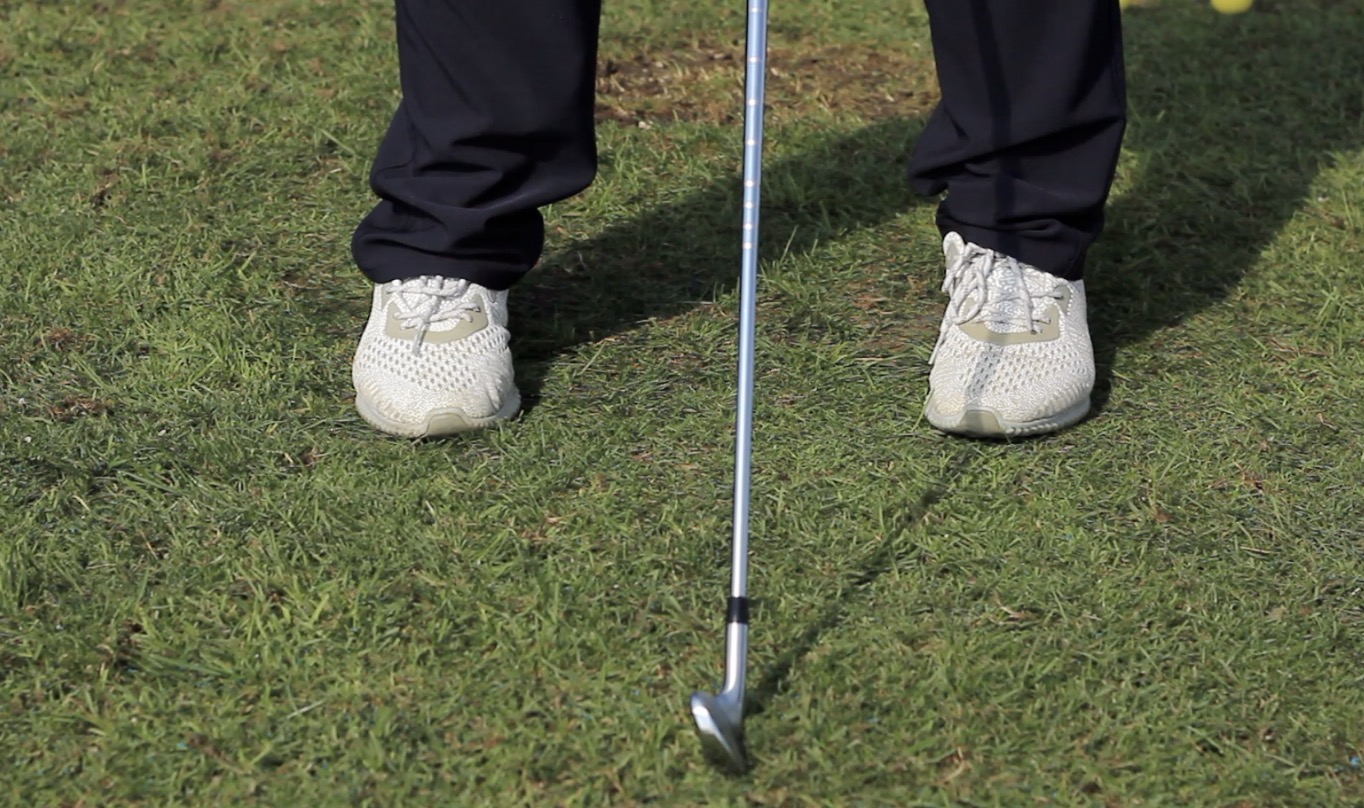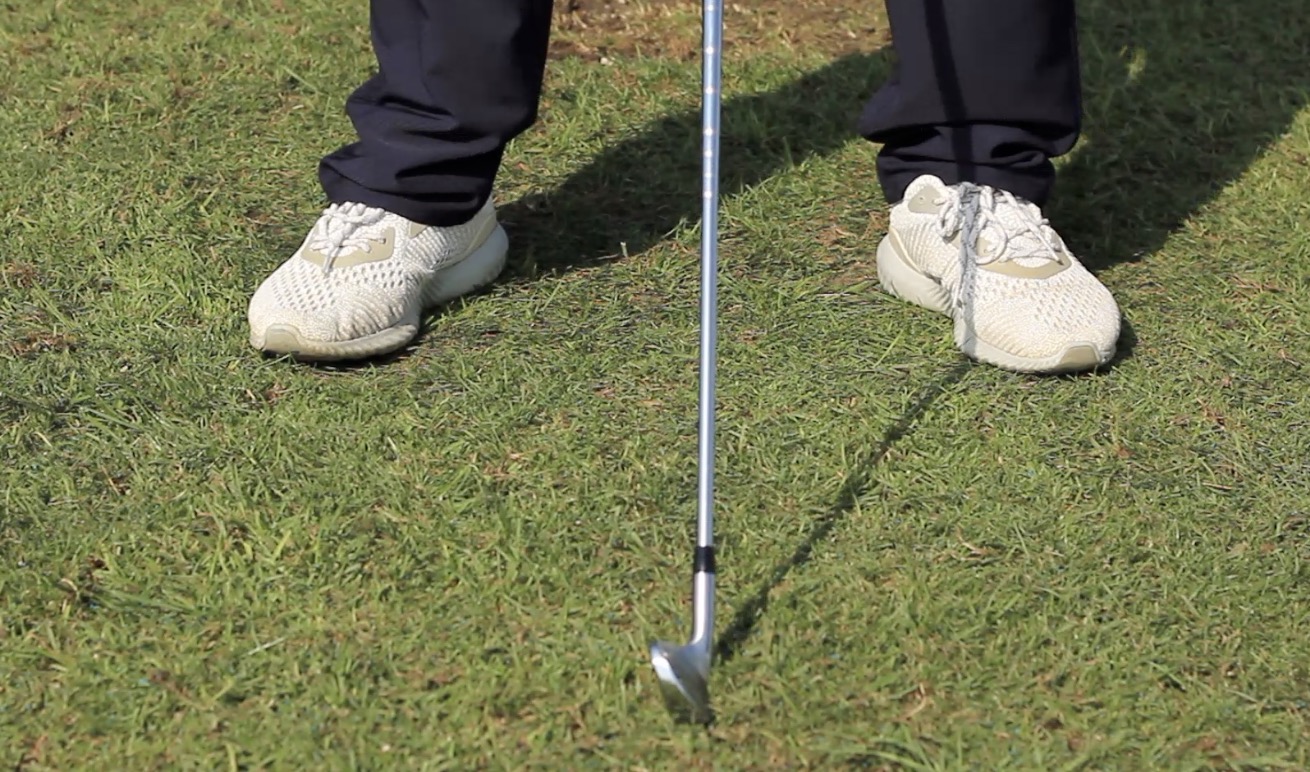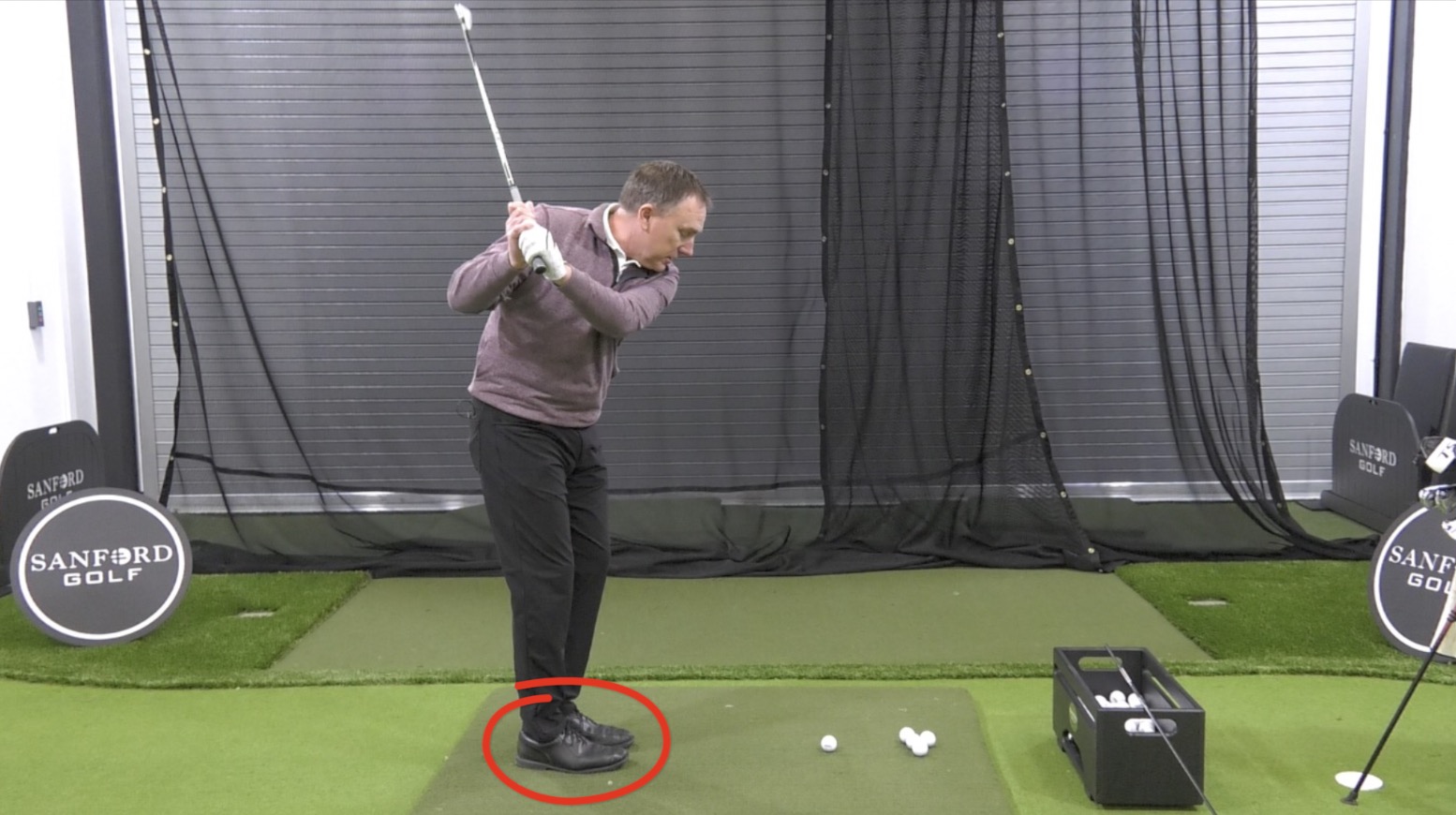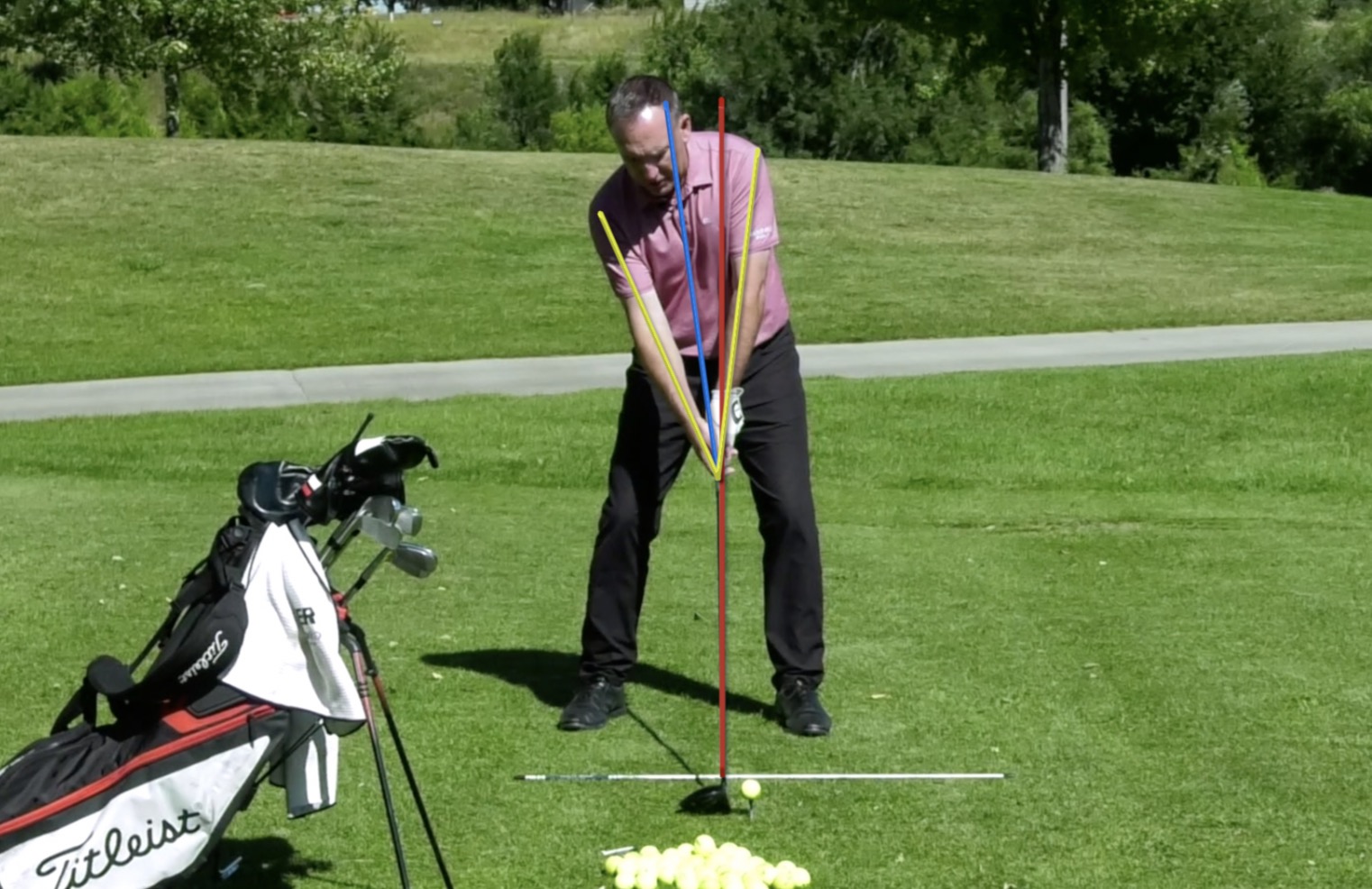Senior Golf Swing: Avoid Injury and Play Better
The Ultimate Guide to the Senior Golf Swing: Powerful New Techniques for the More “Experienced” Golfer
A great senior golf swing requires a completely different technique from the one you learned when you started playing the game.
If you’re noticing that you don’t hit the ball as far as you once did, I have some good news for you:
You actually can get closer to the scores you made when you were younger. I won’t promise that you can match your previous performance exactly. But you can certainly find a lot more enjoyment in the game just by switching to a senior golf swing.
So much of the advice you read in golf magazines and hear from your buddies is based on what the Tour players are doing. And while we all have a lot to learn from the best of the best, you need to remember that you’re working with a different set of circumstances.
You probably aren’t spending hours on your game every single day.
I’d imagine you’re not on a diet and exercise plan designed specifically to support your performance on the golf course.
And you probably have a few more years on your body. That means limited flexibility and a reduced range of motion.
Now, don’t get me wrong. You still have it in you to maximize your swing speed and launch the golf ball. But in order to do that, you need to make some adjustments to the setup and golf swing you’ve been using.
I’m going to walk you through the most common mistakes senior golfers make. I’ll show you how to make adjustments so you can hit the golf ball farther. And then I’ll share a bonus drill to help you master the senior golf swing.
Let’s start with the basics.
How to Improve Your Senior Golf Swing
All the challenges you face as a senior golfer come down to flexibility and mobility.
You just can’t twist and turn the way you could when you were young. If you try to force the same range of motion you used to have, you wind up with lower back pain or other injuries.
This is why I created the Vertical Line Golf Swing in the first place.
With this in mind, the keys to mastering the senior golf swing are simple:
- Make adjustments to release tension and make body rotation easier.
- Find other ways to compensate for the power you lose when you can’t fully rotate your upper body.
We’ll begin by taking a look at your setup.
Setup
If you’ve been playing for a while, you probably have proper golf setup mastered. You know correct body posture, golf ball position, and aim. And this knowledge has probably served you very well for a long time.
But now that you have a more mature body, it’s time to redefine “proper golf setup.”
The Mistake
Your old setup probably looks something like this:
- Feet parallel
- Toes squared to the target
- Head down
- Hips square

Now, for an older golfer, this golf stance presents an immediate problem.
Your body is in a locked position. From here, you are really relying on flexibility in your torso to get the rotation you need in your backswing.
Here’s what you should do instead.
The Senior Golf Swing Fix
Flare your toes out a bit. Maybe even more than a bit. I’d say 25-30 degrees is about right, but you can flare them even more if you’ve noticed a lot of tightness in your hips.

This super simple adjustment unlocks your hips so you can get a wider range of motion and better rotation in the backswing.
I also recommend widening your stance. This helps a lot with balance. As we get older, staying in balance gets a little tougher. As a mature player, you’re bound to lose stability and control when you swing your golf club at 95 or 105 mph.
Your body knows the risks of high swing speeds, even if you’re not thinking about it consciously. So what happens? You hold back. To stay steady, you slow your swing.
But if you step your feet a little wider, you’ll find new stability. Your stance is better prepared to support the power of your golf swing.
How to Avoid Injury When Working on Your Golf Swing
From back problems to rotator cuff injury, poor golf swing mechanics always pose a threat to your physical wellness. But, as we know all too well, the more years on your body, the more vulnerable you are to pain and injury.
And your clubhead speed suffers because of it. You hold back, and you lose yards.
The good news is, you can pick up a swing speed while also protecting yourself from injury.
One way to do this is by adding stretching and exercise into your golf routine. There are some great drills out there that will help you develop greater strength and flexibility in your golf swing. I am an especially big fan of the 90/90 Position.
90/90 Position
- Sit on the ground with your legs out in front of you, feet wide and knees bent to 90 degrees.
- Reach your arms straight out in front of you.
- Rotate both legs from the hip sockets in the same direction so your knees move towards the ground.
- Switch back towards the other direction. You should be creating a windshield wiper motion with your knees.
What I love about this position is that it stretches the hips and it provides a clearer understanding of where you are in terms of flexibility. If you topple over as soon as you reach your arms out, you’ve lost a lot of mobility through the hips. The 90/90 can help.
Now, let’s talk about how you can adapt your swing motion to protect your lower back.
Swing Mechanics: The Mistake
When you’re young, everybody tells you that body rotation is the key to generating power in your golf swing. This is absolutely true . . . when you’re young.
By the time you’re in your fifties, sixties, and—let’s be honest—even your forties, you just can’t get the same rotation in the backswing. Not without risking golf injuries.
So what do you do? You find that power someplace else.
The Senior Golf Swing Fix
The key to a powerful senior golf swing is in the arms. You have to start using your hands and arms more as you get older.
There are a lot of great golf drills for hitting powerful, controlled shots, but I want to share one of my favorites for senior golfers. This one is great for getting the feel of swinging with your arms and putting less emphasis on body rotation.
- Take your golf stance with your feet together. This makes it harder to rotate the body so you’re forced to focus on arms.
- Hit a few golf shots using your arms only.

You can also try this using your regular senior golf stance: feet wide and toes flared. It’s just easier with feet together because it removes the risk of rotating out of habit.
Now, you don’t want to take the turn out of your swing altogether. Rotation still has its place in the senior golf swing. But this drill helps you discover the power of your arms and tap into that isolation so your body learns what it feels like to emphasize arms in your swing mechanics.
This takes a lot of the pressure off your back, literally and figuratively.
Importance of Adjusting Your Golf Swing as Your Body Changes
By now, you’re getting the idea. Mastering the senior golf swing comes down to accommodating for limited hip rotation and other flexibility issues.
Honestly, there is a lot more I could say about playing a better golf game in your later years. In fact, there’s a lot more I have said, and you can check it out in my Vertical Line Swing Series. There are a lot of great tips in there for older golfers, and it doesn’t cost you a dime.
For now, I want to highlight one more common mistake older golfers tend to make. This is less an error in swing mechanics and more about a lost opportunity.
Driver Shots: The Mistake
When you step up to the tee, your goal should be a nice, high draw.
Not a fade.
Why do you want a draw versus a fade?
Well, a fade produces more spin, which means it won’t roll out as much. When you hit a draw, the golf ball lands and rolls, which is the easiest way to add distance to your drive.
If you haven’t been drawing the golf ball, it’s time to make a few adjustments to your setup.
The Senior Golf Swing Fix
This is the perfect setup for hitting a draw with your driver:
- Take your senior golf stance: wide stance, toes flared.
- Position the golf ball more forward in your stance. I recommend placing the ball off the inside the lead heel or even the inside of the lead toe. When the ball is closer to the front of your stance, it makes it easier to hit up on it with your driver. This crucial for hitting a draw.
- Step your trail foot back from the ball just slightly. Your toes and body should now be aiming slightly to the right of the target.
- Raise your lead arm slightly higher than your trail arm.
- Tilt your body away from the target.

Now, it can be tricky to find the right amount of body tilt. Fortunately, there’s an easy technique for that.
- Take your golf stance and hold your driver against your chest so the club shaft runs vertically down your body.
- Tilt away from the target until the club head hits your lead leg.
Now you’re all set up to hit a nice, high draw.
Senior Golf Swing Bonus Tips
Now that you know the three major golf swing mistakes that are holding you back as an “experienced” golfer, I want to leave you with one more drill.
This drill is valuable for players of any age, but it’s especially helpful for senior golfers even with VLS system. I call it the TV drill, and it’s a simple exercise that helps you find the golf swing motion for hitting a draw naturally.
And—as I mentioned—the draw is a powerful tool for finding more distance in your later years.
TV Drill
- Make your golf swing.
- Finish with the butt end of your golf club pointed to the right of the target line.
That’s the whole thing. It’s that simple.
If you like to add a visual to help you out, place any object a few feet out in front of the ball and slightly to the right of the target line. A towel, a head cover, anything. Then finish your golf shot with the butt end of the club pointing to that object.
It may seem too easy to be effective, but this drill actually makes a big difference. When you swing through with this goal in mind, you naturally learn to swing the golf club from in to out. (That’s how you get a draw.)
The TV drill also teaches you how to release the club face and get it back to square at the right time.
In other words, you train your body to find the swing mechanics of a solid draw without all the effort and overthinking. Give it a shot, and let me know how it goes.
What’s Next?
We’ve really only scratched the surface of the senior golf swing. These basics provide a solid foundation, but you can definitely dig deeper if you’d like. In addition to checking out my free Power Clinic Golf, I recommend:
- Learning how to clear your hips for a more powerful golf swing
- Noting these absolute distance killers for older golfers
- Exploring additional tips for senior golfers, such as finding the proper grip, equipment, and posture
Then:
Tell Me What Worked for You
Join us in the comments with your feedback, questions, and opinions. We love hearing from you!
For more in-depth golf tips, visit us at GreatGolfTipsNow.com. This golf instruction is completely free and packed with detailed advice to help you play better golf!


Hello Todd
How does distance with vertical line swing versus pro style compare.
Thanks
Eldon,
We have found our players who use the Vertical Line Swing notice a nice uptick in their distance. Good stuff!
Should I attempt to shallow my swing using the vertical line swing?
Good question. If the body moves correctly, the club will naturally shallow on its own. The club will react to the body movement. Make sense? If you have not already, check out our YouTube channel for more Vertical Line Swing ideas https://youtu.be/4obK1N-N9qY
I’m 58 with multiple injuries from my time in the marine corps.
I started to try using the Stack and Tilt swing it has help me a lot.
But is the Stack and Tilt Swing friendly swing for a senior?
Because I have never hit the ball so we’ll in my life,
Thanks,robin.
Robin,
Thank you for your service to our country! Grateful for the men and women who project our nation. The Stack and Tilt swing is solid and built on sound principles. My guess is you are in good shape and have a nice range of motion. In the end, if you are getting good results, stick to your plan. Hope that helps.
I have trying to use the vertical system you talk about and I like for my irons but I seem to be popping my driver up like it was a wedge, think I am hitting the ball with the crown of the driver any suggestions
Jerry,
Thanks for trying out the Vertical Line System. Hope you are seeing some progress. Here is a good place to start with your driver https://youtu.be/AVcXAyzUsbE
Male, age 72+ with multiple ‘has been jock’ injuries (dislocations, rotator cuff, 1-hip & bilateral-knee replacements, elbow/wrist fractures, cervical/spinal deterioration); 80+ rounds with 11.8 GHIN. Using TK’s recommendations, this has worked for me:
Slightly ‘open’ & wider stance.
Flared toes (lead/left hip issue requires >45′ left flare).
Hip-bump with ‘more pressure /weight on lead.
Grip with neutral lead/left hand & strong trail/right hand (allows wrists to snap-through).
More vertical ‘sbst’ takeaway & return (hook/slice issues if it becomes flat).
Mark,
Thanks for your post and sharing your story. Great to hear of your progress! Here is another good video to help you https://youtu.be/Qvboar4z6gc
Do you have any golf school’s or teachers in the Indianapolis Ind area 46237
Todd,
I recently viewed a couple of videos where you recommend the dine and on another one the 70 degree wedge hummingbird. Can’t put both in my bag. I have an old ping eye 2 sand I could replace and I have 3 Jaws wedges by Callaway. Which would you recommend I try?
Thank you for reaching out Gil! We do not have any golf schools currently in the Indianapolis area, but we are doing some free webinars right now if you would like to learn more about the Vertical Line Swing! Here is a link to sign up: https://tinteractive.clickfunnels.com/webinar-registration1637088676036
Thanks for following!
Donnelly,
Great question. If you need help with the high soft shot or out of the bunker, go with the Hummingbird. For the basic shot around the green, the Yuma is solid! Hope that helps.
Just a non-golf tech comment. If you are going to teach something where we are to look at your legs, do not ware black pants and have a black background. Your legs blend in with the background and it is difficult to distinguish them from the background. The segment where I noticed it is in one of the videos for older golfers and you are instructing to flare the toes out.
Ernie,
Fair points. All golfers, could benefit from this https://youtu.be/czAMI0VeSX0